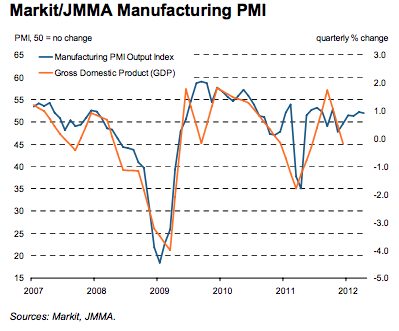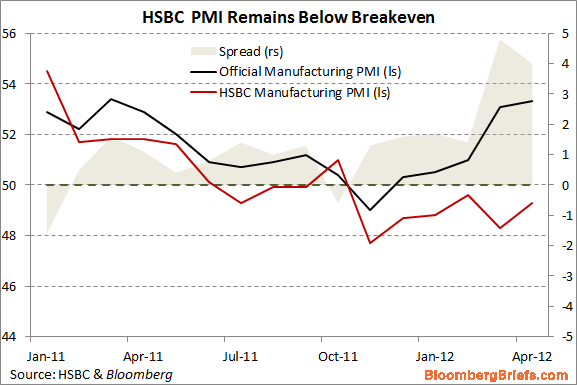It’s that time of the month again – PMI time! And the news is not much better than last month with the global zombie shuffling on in search of more “braaaiiins”, up 0.3 in the month to 51.4:

This result was largely driven by the US which, as I’ve documented, is questionable given the clear weakness in their regional reports which I expect will flow through in the next month or two. Europe taken of course and Asia has gone largely sideways, whihc is what this post is all about!
Japan was out the other day and fell o.4 points to 50.7:

South Korea was out yesterday and it’s nice little bounce slowed 0.1 points to 51.9%:

Taiwan was also out yesterday and also slowed, even more, falling 1.9 points to 51.2:

China, as we know, has had a PMI divergence, with the HSBC index registering ongoing recession versus the official PMI’s growth:

So, what can we say about these indexes? First, there’s fading pulse in North Asian manufacturing. Perhaps not stall speed but a long way from vigour. This slowing of growth is being driven by weakness in external demand for all countries.
This is not terribly encouraging for the year ahead. I’m not saying we’re headed towards a global recession, we’re not, I don’t think. Europe is clearly still deteriorating and it’s my belief that the US growth pulse of the past six months is also fading but China will bounce along in the 7-8 per cent range for the year.
Nonetheless, central banks are clearly pushing shit up hill in their endeavour to keep this baby afloat. More stimulus is going to be needed everywhere, including the US and Australia. Neither commodities nor equities are priced for this lackluster growth.

